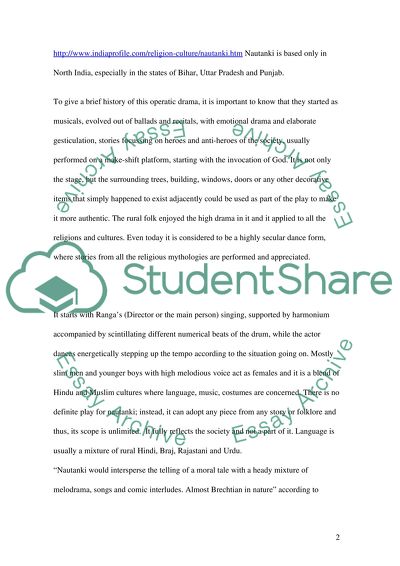Cite this document
(A Theatre Form Called Nautanki Essay Example | Topics and Well Written Essays - 2054 words - 1, n.d.)
A Theatre Form Called Nautanki Essay Example | Topics and Well Written Essays - 2054 words - 1. Retrieved from https://studentshare.org/visual-arts-film-studies/1532649-research-commision-on-theatre-tradtion-nautanki
A Theatre Form Called Nautanki Essay Example | Topics and Well Written Essays - 2054 words - 1. Retrieved from https://studentshare.org/visual-arts-film-studies/1532649-research-commision-on-theatre-tradtion-nautanki
(A Theatre Form Called Nautanki Essay Example | Topics and Well Written Essays - 2054 Words - 1)
A Theatre Form Called Nautanki Essay Example | Topics and Well Written Essays - 2054 Words - 1. https://studentshare.org/visual-arts-film-studies/1532649-research-commision-on-theatre-tradtion-nautanki.
A Theatre Form Called Nautanki Essay Example | Topics and Well Written Essays - 2054 Words - 1. https://studentshare.org/visual-arts-film-studies/1532649-research-commision-on-theatre-tradtion-nautanki.
“A Theatre Form Called Nautanki Essay Example | Topics and Well Written Essays - 2054 Words - 1”, n.d. https://studentshare.org/visual-arts-film-studies/1532649-research-commision-on-theatre-tradtion-nautanki.


